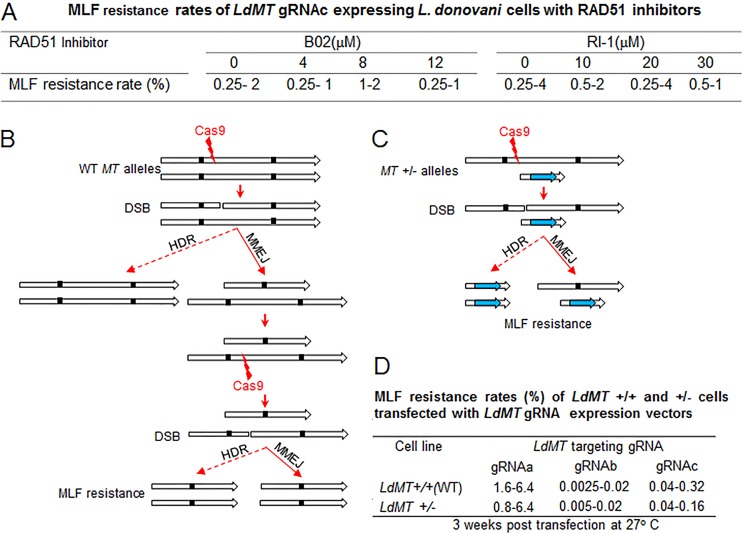FIG 7 .
MMEJ plays a dominant role in double-strand DNA break repair in L. donovani. (A) RAD51 inhibitors B02 and RI-1 did not improve CRISPR gene inactivation efficiency in Leishmania. LdMT gRNAc-expressing L. donovani cells 6 weeks post-pSPneogRNAcH transfection were subjected to various concentrations of RAD51 inhibitors in culture medium for 2 weeks before measuring the miltefosine (MLF) resistance rate by limiting dilution. (B) Schematic showing that at least two Cas9 cleavages followed by two MMEJs or one MMEJ plus one HDR are required for wild-type (WT) L. donovani (MT+/+) to be MLF resistant (both MT alleles must be mutated). The small, filled black squares represent the microhomology sequences. (C) Schematic showing that only one Cas9 cleavage plus one MMEJ or one HDR are required for the L. donovani MT+/− mutant to be MLF resistant (only the remaining WT MT allele needs to be mutated). This Ld MT+/− mutant was first generated by inserting a bleomycin resistance gene into one of the LdMT alleles by the traditional homologous recombination method. (D) MLF resistance rates of LdMT+/+ and Ld MT+/− cells transfected with LdMT gRNA -a, -b, or -c expression vectors. The data show the ranges of results from three independent experiments.

